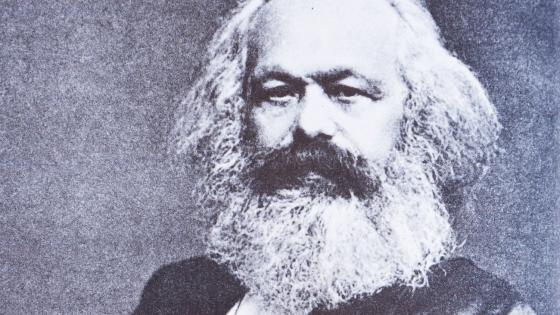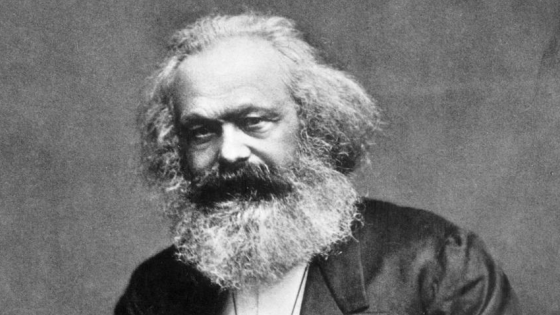What can we learn from Marx about inequality? The current debate about inequality frequently refers to ideas about capitalist dynamics that were first formulated by Karl Marx and his followers in 19th century Europe (e.g. Bowles 2018). Does capital accumulation increase capital concentration and income inequality? And does it spur political support for socialism? Orthodox Marxists like Karl Kautsky, the leading theoretical Marxist of the Second International (1889–1916) considered these mechanisms to be the defining feature of capitalism (Gronow 2016).
However, these mechanisms were disputed at the time, even within the socialist movement. The so-called Revisionists around Eduard Bernstein heavily attacked the orthodox Marxists arguing that, with the help of trade unions, capitalism could be changed for the benefit of workers.
The debate on the observed increase in inequality during Germany’s industrialisation and their political repercussions shaped all later discussions about income inequality in capitalist economies. This influence extended to the work of Kuznets (1955), who predicted – in response to orthodox Marxism – that inequality would first rise with economic development and then fall.
In our recent work (Bartels et al. 2023), we ask – with the benefit of hindsight – which predictions of orthodox Marxism were borne out in the data of 19th century Germany. We also test the competing predictions of the Revisionists around Eduard Bernstein and investigate how trade unions and labour conflict turned out to be related to income inequality and political support for socialism. We do so by drawing on a wealth of historical statistics and modern econometrics. Our approach can be read as a contribution to the history of economic thought that uses econometric methods to test claims made by economists of the past.
Both orthodox Marxists and Revisionists grounded their arguments in statistical evidence from the German statistical office and other contemporary official statistics. For example, in 1899 Kautsky claimed “If ever a theory was splendidly confirmed, it was the theory by Marx in the data from the German occupation and industry census.” (Kautsky 1899, p.68, own translation). Using the same sources but relying on modern statistical techniques, we reevaluate the Revisionism debate. We compile new panel data on capital accumulation, income inequality, capital share, capital concentration, and socialism across 28 districts and 544 counties in Prussia between 1874 and 1913. We measure capital accumulation and top-income shares using regional wealth and income tax statistics. We compute regional capital shares by combining tax statistics with additional data sources on retained earnings and self-employment. We measure capital concentration by average firm size documented by the firm census. Finally, we collected vote shares from the elections of the federal parliament (Reichstag), strike activity across industries, and membership in trade unions.
Does capital accumulation increase capital concentration and income inequality?
For Imperial Germany before 1914, we have strong evidence that capital accumulation causally led to a growing share of capital in total income and contributed to income inequality, as first predicted by Karl Marx and believed by his followers, but contested by their critics. To establish causality on the effects of capital accumulation, we exploit the spatial diffusion of industrialisation over time across Prussia. The coefficients from our preferred IV estimation indicate that one standard deviation increase in capital accumulation can causally explain roughly 70% of a standard deviation increase of the change in the top 1% income share and more than 75% of a standard deviation increase of the change in the capital share.
Next, the evidence is mixed about the role of concentration within the process of capital accumulation. Note that orthodox Marists at the time considered this prediction to be crucial: “The concentration of capital sets the historical task: the introduction of a socialist social order. It produces the forces to accomplish this task, the proletarians, and it creates the means of doing so: social production.” (Kautsky 1899: 54). According to our evidence, they were right in their prediction that capital concentration was rising steeply. However, they were mistaken in their conviction that this ‘centralisation’ of capital was causally driven by capital accumulation. Given the weight that Kautsky placed on this question, this finding is significant.
Does capital accumulation lead to more political support for socialism?
The orthodox Marxist hypothesis regarding the relationship between capital accumulation and support for socialism was always related to the claim that capital accumulation would lead to an immiseration of the working class, which would fuel the political struggle. In the words of Karl Marx: “Along with the constantly diminishing number of the magnates of capital [...] grows the mass of misery [...]; but with this too grows the revolt of the working class [...].” (Marx 1867, Ch.23). Our findings speak against this prediction. Real wages started to increase, significantly in the 1890s. This is in line with evidence from other industrialised countries at the time, such as the UK (Allen 2009). We also do not find evidence that capital accumulation strengthened political support for socialism through any other channel.
Can capitalism, with the help of trade unions, be changed for the benefit of workers?
The Revisionists rightfully stressed the role of labour conflict in limiting income inequality. In the wake of the new trade laws of 1869, a growing number of trade unions was formed in Germany. They quickly improved their organisation and managed to mobilise an increasing part of the industrial workforce. After the end of the anti-socialist laws in 1890, unions were allowed to resume their activities. We find support for the Revisionists’ claim that successful strikes helped to redistribute income between capital owners and workers, albeit only temporarily. A 10% increase in the number of successful strikes is associated with a reduction of the top 1% income share by around 1.4 percentage points. These are sizeable magnitudes given that, on average, the top percentile received 12% of total income. Apparently, the greater the number of successful strikes, the more income was redistributed from top-income earners to the middle and bottom of the distribution. What is more, the Revisionist strategy of strengthening the trade unions seems to have been a building block for the remarkable political success of the SPD before 1914.
General laws of capitalism and institutional change
Our paper illustrates why theories seeking ‘general laws of capitalism’ are bound to fail unless they place historical factors such as institutional and technological change on centre stage (Acemoglu and Robinson 2015). We view our study as a case of how economic theory itself – in the form of Marxist thinking – can lead to policy responses that make a given economic model no longer a good fit for the data. The possibility of institutional change that could limit inequality and let workers benefit from industrial growth was not part of the Marxist predictions. This speaks to the bemoaned dilemma of social democratic socialism: “Socialism cannot be achieved without participation in democratic institutions, but participation erodes the will for socialism” (Przeworski and Sprague 1986: 2).
To conclude, our evidence on Germany before 1914 shows again that any quest for general laws of capitalist development must be elusive. We find that Marx and his orthodox followers were (partly) correct in their diagnosis of the wide-ranging effects of capital accumulation on capital concentration and income inequality. However, they underestimated the scope for institutional adjustment within a capitalist society. Nevertheless, while Marx is long dead, his question about the long-run dynamics of capitalism will continue to haunt us.
References
Acemoglu, D and J A Robinson (2015), “The Rise and Decline of General Laws of Capitalism”, Journal of Economic Perspectives 29 (1): 3–28.
Allen, R C (2009), “Engels’ Pause: Technical Change, Capital Accumulation, and Inequality in the British Industrial Revolution”, Explorations in Economic History 46(4): 418–435.
Bartels, C, F Kersting and N Wolf (2023), “Testing Marx. Inequality, Concentration, and Political Polarization in Late 19th Century Germany”, Review of Economics and Statistics, forthcoming.
Bowles, S (2018), “Marx and Modern Microeconomics”, VoxEU.org, 21 April.
Gronow, J (2016), On the Formation of Marxism: Karl Kautsky’s Theory of Capitalism, the Marxism of the Second International and Karl Marx’s Critique of Political Economy, Haymarket Books.
Kautsky, K (1899), Bernstein und das Sozialdemokratische Programm: Eine Antikritik, Dietz Verlag.
Kuznets, S (1955), “Economic Growth and Income Inequality”, American Economic Review 45 (1): 1–28.
Marx, K (1867), Das Kapital. Kritik der Politischen Ökonomie. Erster Band. In: Karl Marx Friedrich Engels Werke (MEW). Band 23. Berlin: Dietz Verlag.
Przeworski, A, and J Sprague (1986), Paper Stones: A History of Electoral Socialism, The University of Chicago Press.






